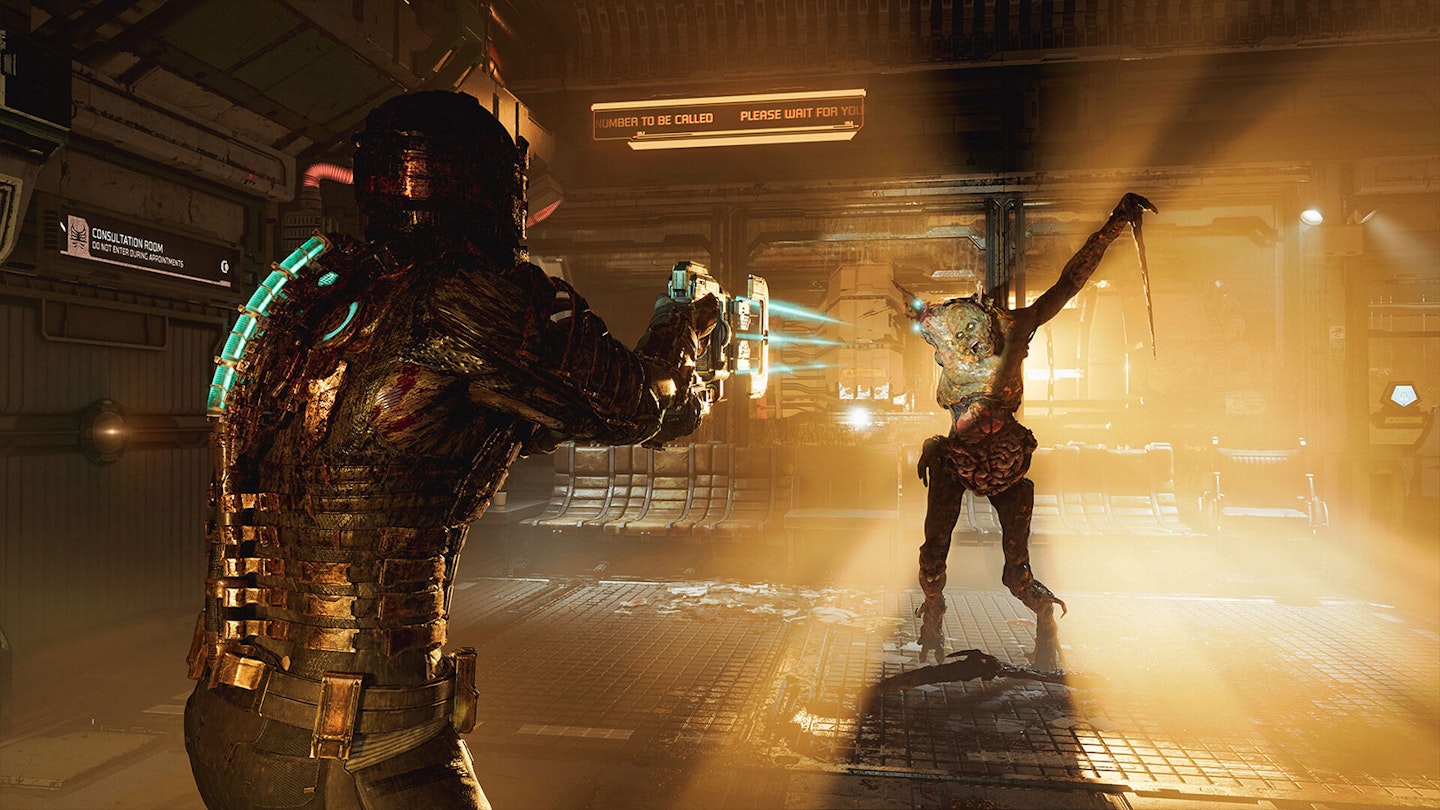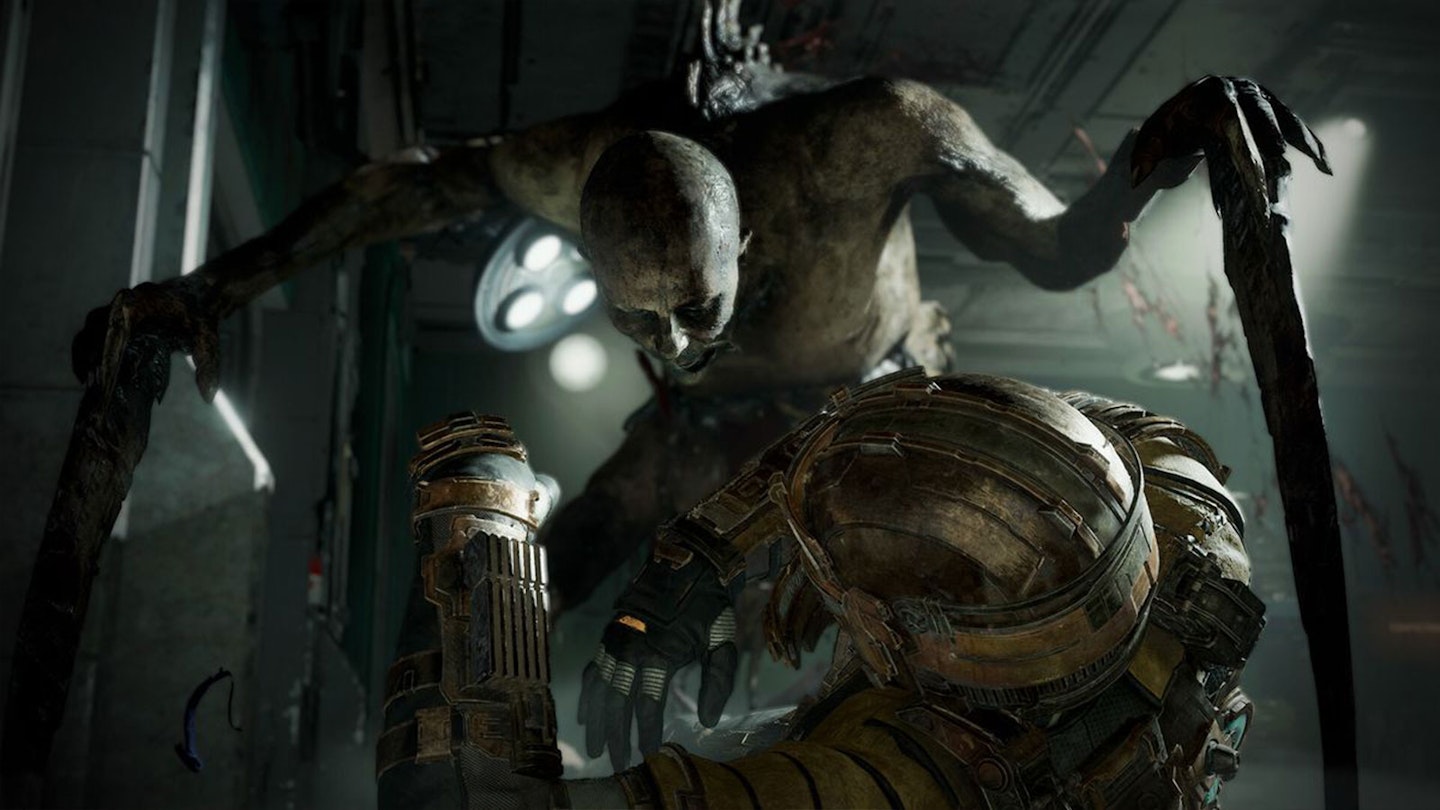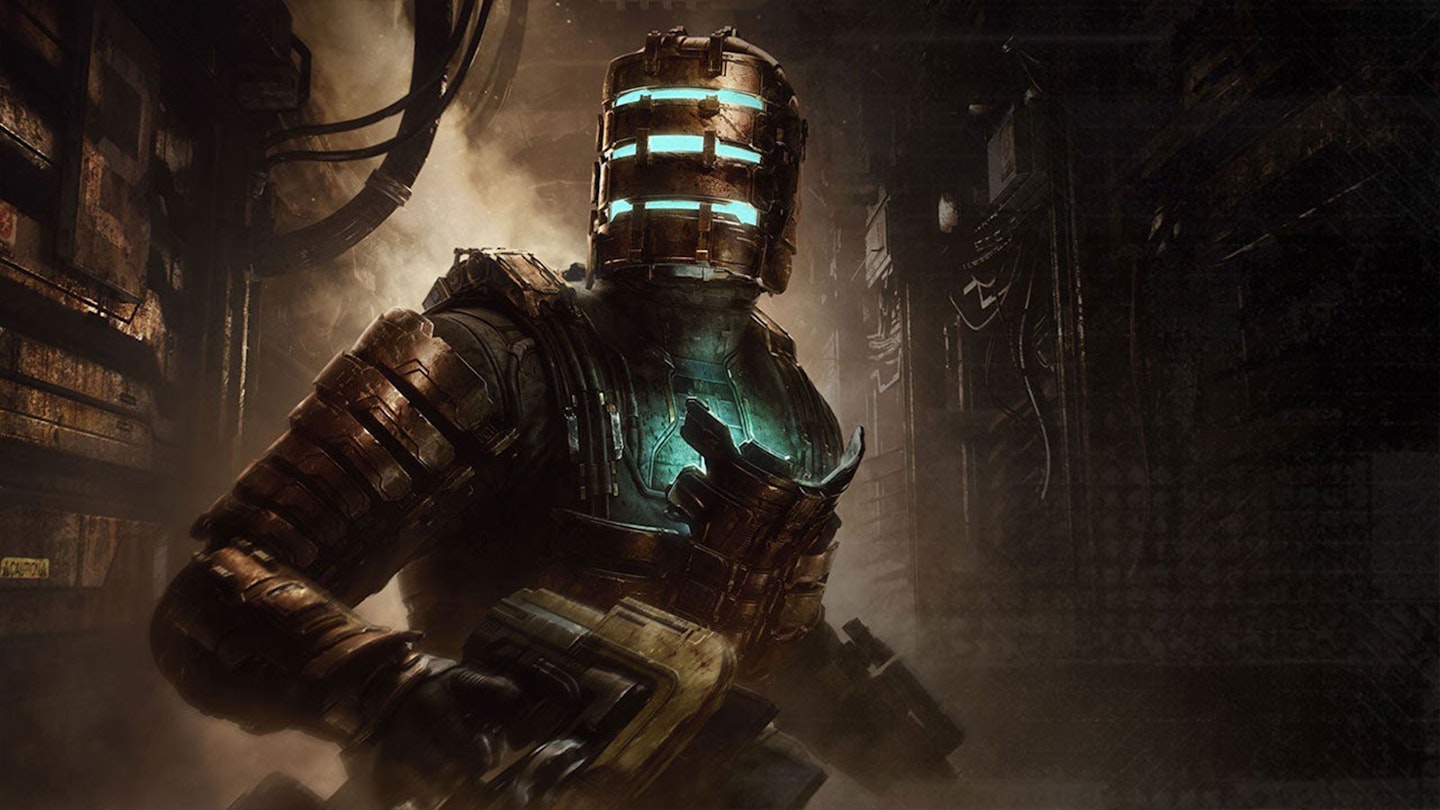Platforms: PS5, Xbox Series X, PC
2008’s original Dead Space was almost an accidental hit for publisher EA, with its blend of sickening body horror, unspeakable cosmic malevolence, and tight action gameplay winning over players and spawning an eventual trilogy. Fast forward to 2023, though, and key creators from the original have moved on to The Callisto Protocol – so can this glossy remake be anything more than a cynically corporate effort at recycling IP into franchise-building fodder?
Short answer: yes. Kind of. The passage of time means more powerful hardware and game engines on which to (re)build the terrifying tale of Isaac Clarke – a 26th century engineer, forced to uncover the horrifying truth behind what happened on the “planet cracker” mining ship USG Ishimura after finding it infested with undead Necromorphs while on a routine repair run. Developer Motive Studio ultimately offers more of a refinement of that first game than a generational reimagining. Where the original trilogy was developed iteratively, the remake feels framed to better set up the likely-inevitable sequels to follow, the developers now having at least a rough existing map of where they want to go. The result is a horror game fit for modern players, without rocking the boat so much that it’ll alienate long-time fans.

One of the biggest changes in the remake is simply that protagonist Isaac Clarke now speaks. While he previously found his voice in 2011’s Dead Space 2, his silence in the original Dead Space was part of what made the game so unsettling, drawing the player deeper into the horror of his isolated nightmare. Now, he’s an integral player in cutscenes, and chats with colleagues over comms while pursuing objectives.
To its credit, Motive hasn’t reimagined 2023’s Isaac as some sort of quip-spouting space marine, and even tries to retain some of the old, chilling muteness by not having him offer commentary with every corner he turns. In places, the voice work (with DS2 and DS3’s Gunner Wright returning as Isaac) imbues Isaac with more personality, which – with the help of some expanded plot points – gives more clarity to his relationship with Nicole Brennan, the Ishimura’s medical officer. Overall though, the change still makes this Isaac feel like a more generic lead.
While the actual horror aspects of Dead Space are still reliant largely on jump scares, they are masterfully delivered.
If Isaac is less of a character in the remake, then the enhanced Ishimura is even more of one. The labyrinthine mining rig was always one of the better examples of environmental storytelling in games, but is now elevated with far more detail than was possible 15 years ago. The Necromorph presence – the Ishimura’s crew, their bodies warped almost beyond reckoning by an ancient force – now feels even more pervasive, with tendrils of undead flesh twisting through the industrial scaffolding of the ship. The contrast of heavy machinery and unsafe conditions in the manual operations areas with the sleek, glossy command sections of the colossal vessel speak to a dismal future under Space Capitalism.
A moderately revamped layout also keeps things fresh for returning players who may still have the original’s map committed to memory. The addition of new rooms gated by upgradeable security clearances provides some added benefit to all the back-tracking you’ll be engaging in – you’ll often be rewarded with precious resources or weapon mods, while some new locations offer side missions that expand the wider story – while the ship’s on-board tram is now more of a fast(ish) travel system, allowing you to hop between areas once you’ve reconnected them to the network. Even some of the more dated design elements – such as the once-fresh diegetic approach of having advice to “cut their limbs off” scrawled on walls in the blood of now-lost Ishimura crew, which now feels slightly hammy – look better than ever.

Other elements don’t feel to have been given quite such an overhaul though, especially with regards to combat. The series’ signature approach of dismembering Necromorphs with the likes of laser cutters or ripsaw blades is rightly retained, but beyond some nice tweaks afforded by modern visuals – enemies are significantly more detailed, allowing sloughed-off meat and exposed bone (yes, it’s all very gory) to serve as visual indicators of how close you are to blasting an appendage off – it still feels a little dated.
Although the behaviour of every enemy type is much improved, once you’re used to those patterns, encounters still tend to fall into a routine of freezing an enemy using the stasis tool, surgically removing its murderous limbs, and stomping the remains to be sure. Later weapons and powers spice things up a bit, with Isaac able to repurpose severed Necro-bits as telekinetically-hurled skewers, or use a flamethrower to flambé bigger swarms of enemies, but the 15-year-old core is somewhat showing its age.
While the actual horror aspects of Dead Space are still reliant largely on jump scares, they are masterfully delivered. Every service panel or ventilation duct is viewed with suspicion as you expect a shambling monster to leap out of it, only for it to often appear from one you missed. It’s all enhanced by exquisite audio design, which taunts and misdirects the player with the sound of monsters skittering somewhere behind the clashing of machinery, or breaking an oppressive silence with a marrow-draining screech. Sound was arguably the original Dead Space’s greatest tool in ratcheting up the stress levels, and it’s one of the areas that are most evolved here – in surround sound or with a 3D audio headset on, it’s hellishly scary. Jumps aside, though, it’s the more eldritch elements, the dark secrets of whatever the Ishimura uncovered, that are still the most chilling parts, with their implications likely to linger uncomfortably long after you put the controller down.
While 2023’s Dead Space doesn’t quite pack the punch of its raw, scrappy predecessor, it does also feel more cohesive, better served to build a planned horror franchise in ways the original wasn’t. Meanwhile, those sacrifices to modernity, such as a talking Isaac, will likely pass newcomers by entirely. It’s a strong foundation for whatever follows, but any returning players expecting a remake on the scale of Final Fantasy 7 Remake will be disappointed.
